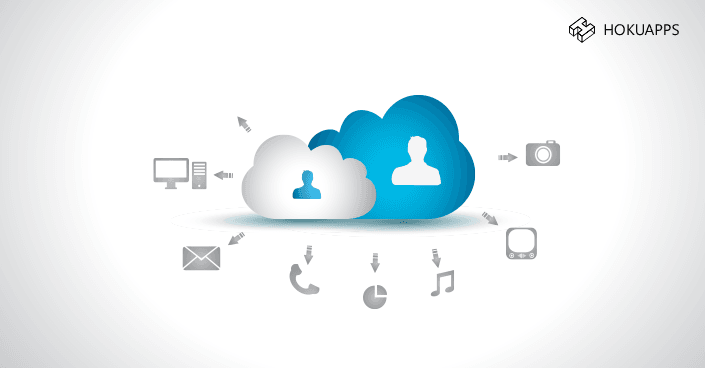- Products
- Solutions
- Services
- Resources
- Customer Success
- Company
- Sign In
- Contact Us

Digital Transformation enabler helping enterprises evolve by connecting technology
Take a look at upcoming webinars and special events
HokuApps news and media coverage
Be with the best. Solve real problems
Get in touch with our experts here
Explore our extensive collection of online resources here
Information and insight on transformation to the Digital Workplace
Quick Guides provide concise information on a variety of topics
Discover the essence of HokuApps’ products
Learn all about HokuApps’ cutting-edge enterprise mobility technology

Cloud computing affects critical aspects of a business in the current milieu. A wide range of operations — sales, human capital management, marketing, supply chain, manufacturing, finance, pricing, and orderin g— stand to benefit from SAP Cloud Integration. As businesses transition to the Cloud, they require migration and integration solutions.
Each vendor providing SAP ERP cloud solutions creates their own interface to the application. This challenges IT organizations, especially ones with extensive global branches. Each branch would struggle to comprehend and manage unique application interfaces. Integrating applications from Cloud to Cloud and Cloud to on-premise can pose myriad problems. It is for these reasons that the HokuApps SAP Cloud Integration solution is invaluable to a modern enterprise IT.

Adopting third-party applications may imply the creation of additional silos of information. These may end up as disparate sources of information, inhibiting ease-of-use due to the creation of a hybrid architecture that operates on-premise solutions as well as Cloud-based SaaS applications. SAP Cloud Integration of applications and data can be central to boosting business efficiency. SAP Cloud Integration ensures that business users can access the requisite data with minimal friction, resulting in optimized productivity and enhanced customer interaction.
SAP Cloud Integration can provide multiple benefits related to business goals:
A SAP Cloud integration solution bridges the gap between on-premise systems and new Cloud applications, platforms and infrastructure. SAP Cloud Integration must ensure a swift and easily usable methodology for the integration.
HokuApps SAP Cloud integration provides seamless integration of Cloud applications with on-premise systems, as well as Cloud applications-to-Cloud applications. The HokuApps SAP Cloud Integration environment operates with regard to business requirements applications, and business user requirements. SAP integration solutions simplify the entire process of integration.
As is true with any tool, there exists preferred practices to implement designs. A poor design would mean protracted integration timelines or even failure while processing large volumes of data. Each endpoint varies in requirement and integration flow must be able to use the features available to reap the benefits. For example, processing data in batches to optimize the speed of transactions.
HokuApps offers a SaaS installation model. Its SAP Cloud Integration tools allow Cloud-to-Cloud, Cloud to on-premise and on-premise to on-premise integration. This facilitates both real-time and batch integration.
A project must contain integration workflows or orchestrations. At the point of project completion, it must be instantly published to the runtime environment.

SAP Cloud Integration offers the following competences:
The HokuApps SAP Cloud Integration platform contains inbuilt connectors for over 500 applications. However, setting up a connector for each application in the market is not feasible. Companies often choose to connect to their own internal applications. One can use web services that provide generic connectivity or use the database to connect to applications. But the HokuApps’ custom Connector Development Kit (CDK) can develop a specific connector to an application. The HokuApps custom connector will save time and resources on IT services that would be required to set up a connector.
The CDK is a wizard-driven tool that facilitates creating a connector to abstract, specific functionality of the application, for example inserting new records or updating existing records. The CDK provides tools required to not only create the connector but also to perform varied functions such as unit testing, integration testing, packaging and deploying the connector.
The HokuApps SAP Cloud Integration architecture and design offers a multitude of features that ensure dependable and swift service as well as maximum availability:
SAP Cloud Integration offers companies numerous capabilities that satisfy their business needs. In addition, SAP Cloud Integration also creates a hybrid architecture that includes both on-premise systems and the Cloud. SAP Cloud Integration eradicates the gap between existing systems (on-premise and Cloud-based) and the new Cloud-based platform, applications and infrastructure.

HokuApps’ SAP Cloud Integration resolves the challenge of integrating Cloud applications with on-premise systems, Cloud applications-to-Cloud applications as well on-premise to on-premise applications. The SAP Cloud Integration platform comes with a graphical development environment that powers built-in connectivity to many Cloud and on-premise applications. It also provides reusable solution templates that are downloadable from the HokuApps solutions repository.
The HokuApps SAP Cloud Integration platform is ideal for leaders, executives, and architects seeking ways to integrate Cloud applications with their on-premise applications. The HokuApps SAP Cloud Integration solution is a major asset for any company looking for seamless resolution of its integration challenges.